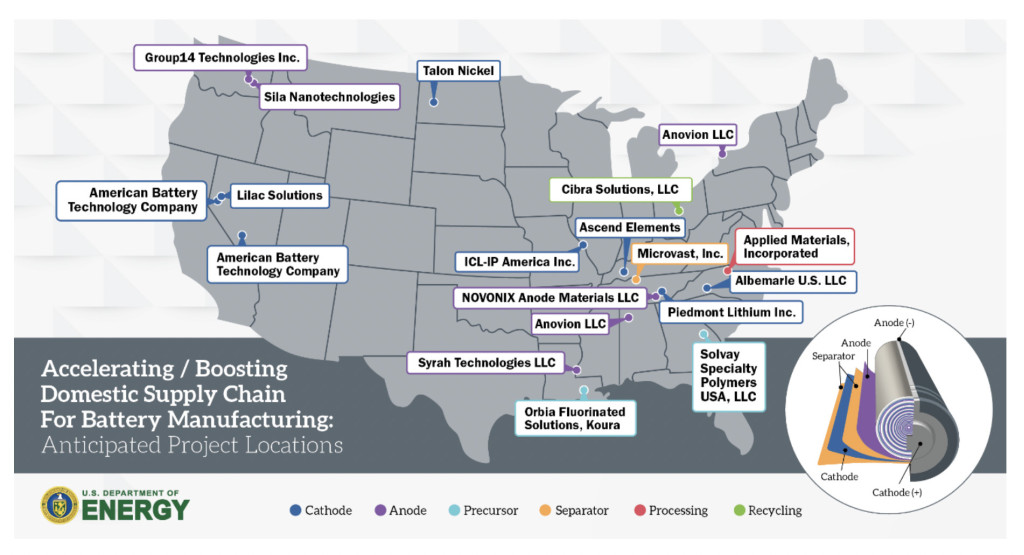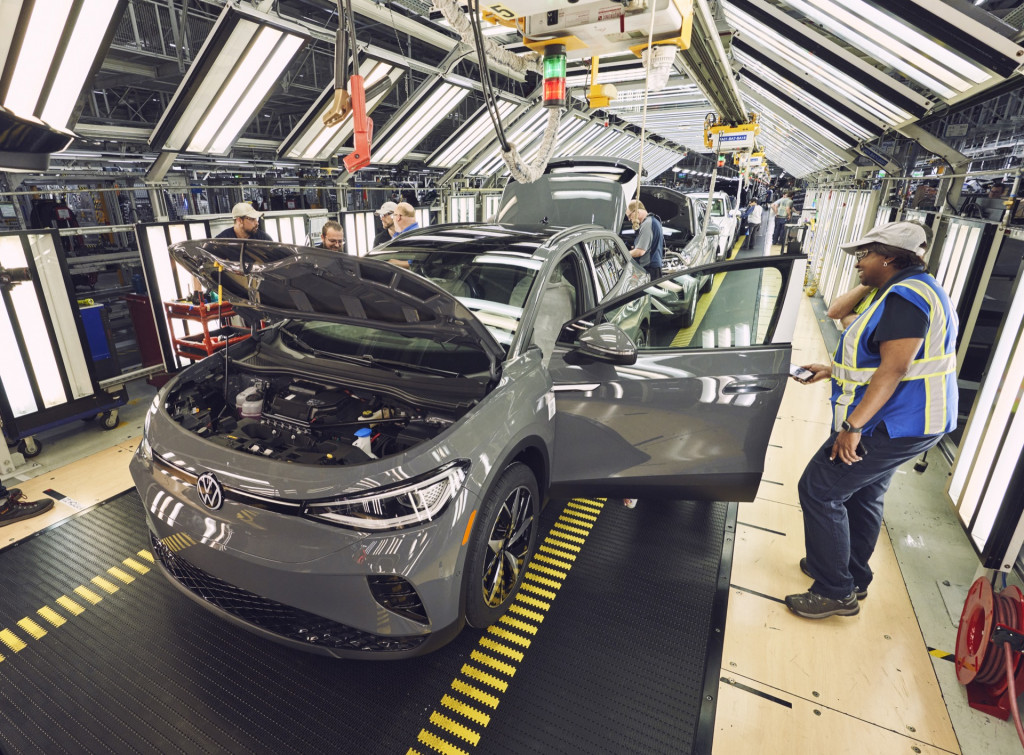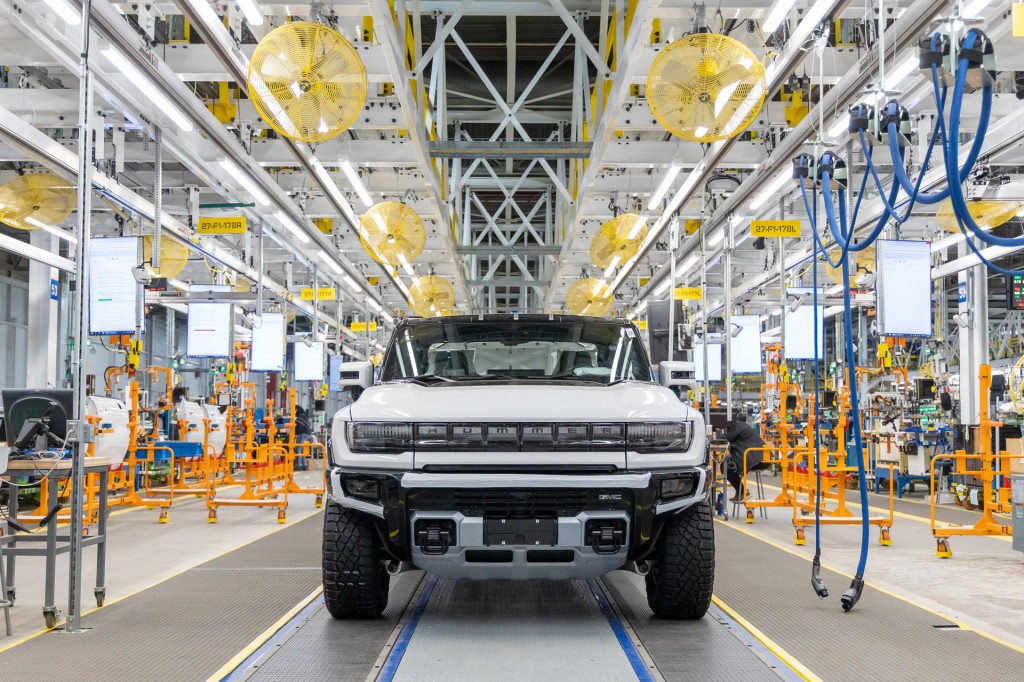The White House on Wednesday detailed $2.8 billion in grants to build a domestic EV battery supply chain, but more of the funds in this allocation go toward projects in states opposed to climate action, and states for which legislators voted against the law.
Part of the Bipartisan Infrastructure Law passed in 2021, the funding goes to 20 battery manufacturing and raw-materials processing companies for projects across 12 states, according to a White House press release. When matched by recipients, the funding totals more than $9 billion, the White House noted.

Battery supply chain projects to be funded by the Bipartisan Infrastructure Law
But as The New York Times pointed out, the flow of money, which is being announced just weeks before consequential midterm elections, is weighted toward red states. The list of states where projects receiving the federal funding are located includes: Alabama, Georgia, Kentucky, Louisiana, Missouri, Nevada, New York, North Carolina, North Dakota, Ohio, Tennessee, and Washington.
Goals for the funding include developing enough lithium supply for approximately two million EVs annually, graphite supply for 1.2 million EVs annually, and nickel supply for 400,000 EVs annually.

Volkswagen ID.4 built at Chattanooga
Grants will also fund expanded refinement and manufacturing infrastructure, including the first commercial-scale lithium electrolyte salt production facility in the United States, the first commercial-scale domestic silicon oxide production facilities (for battery anodes), and the first U.S. lithium iron phosphate (LFP) cathode facility. Another project is an electrode binder facility that aims to satisfy 45% of demand for battery binders by 2030.
In addition to funding battery supply infrastructure, the Bipartisan Infrastructure Law also funnels $7.5 billion toward creation of a national EV charging network that now includes plans for all 50 states.

2022 GMC Hummer EV pre-production at Factory Zero plant in Detroit, Michigan
Outside the Bipartisan Infrastructure Law, the Energy Department earlier this year designated more than $3 billion toward the domestic supply chain, and the Biden Administration has already turned to the Defense Production Act to bolster battery materials.
This should result in more affordable EVs in the long term. In more immediate consumer sense and over the short term, the Inflation Reduction Act (IRA) and its revamped EV tax credit will mean less affordable EVs.
